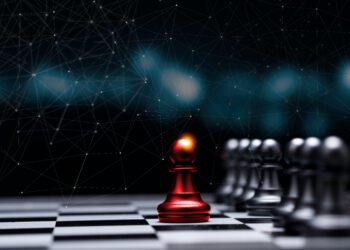McKinsey presents a road map towards economic and environmental sustainability.
The steel industry is a backbone of the European economy and a key supplier to Europe’s automotive, machinery, and other flagship industries. However, total returns to shareholders (TRS) have been lackluster compared with those in other heavy industries, such as mining or energy.
Following the global financial crisis in 2008–09, the European steel industry experienced a permanent demand loss of approximately 35 million tons, dropping from 188 million tons (average 2004–08) to 153 million tons (average 2011–19). This loss was driven by a decline in demand from all end-use sectors, particularly from construction following the construction boom (especially in Southern Europe) and from the oil and gas industry, due to declining drilling activity and the lack of large pipeline projects.
Europe was once a net exporter of steel products but has been a net importer since 2016, with net imports reaching around three million tons in 2020. Increasing imports, combined with structural demand loss, accelerated the decline of capacity utilization.
Despite a demand recovery and price surge for steel products at the end of 2020 and beginning of 2021—the industry experienced a 46% increase in hot rolled coil price from September 2020 to January 2021—the COVID-19 crisis exacerbated the structural challenges of the European steel industry. The surge in prices was driven by a temporary supply shortage, as demand due to, for example, restocking in automotive and construction recovered at a much faster pace than EU steelmaking capacity. Overall, capacity utilization in the European steel industry in 2020 dropped to approximately 63 percent. Over the next three years, capacity utilization is expected to recover to between 70 and 75 percent, expecting a demand of approximately 140 million to 150 million tons per year to mark a “next normal” in the industry. A reduction of 25 million to 30 million tons of surplus capacity would thus be required to achieve a sustainable capacity utilization of about 85 percent.
In addition, margins over raw materials will be more volatile and uncertain going forward, significantly increasing the challenge of forward-looking planning for European steel producers. Key factors driving this volatility include the increasing influence of China and other large steel markets on price dynamics in Europe, European production capacity adjustments lagging demand changes, price volatility for raw materials, and currency dynamics.
Going forward, the European steel industry needs to respond to three main challenges:
- An increase in structural overcapacity following a demand loss of five million to ten million metric tons due to the COVID-19 crisis—European steel players need to adjust overcapacity to be in sync with next normal steel demand.
- Rising costs related to paying for CO2 emissions—European steel players need to have a short-term response to compensate for higher cost with profitability improvements and incremental measures reducing CO2 emissions —for example, increasing scrap rate.
- Significant investments to decarbonize the European steel industry in the medium to long term—Steel players need to tailor their long-term plan and technology choice toward CO2 neutrality considering guidance and potential support from policy makers.
European steel producers should consider making a series of short-term operational and medium- to long- term strategic moves to ensure economic and environmental sustainability going forward. These strategic moves could encompass restructuring steps aimed at capacity reduction, steps toward strengthening the position of steel companies by diversifying their capabilities, and sustainability moves toward low- and no-carbon steel.
Read the full report here.












